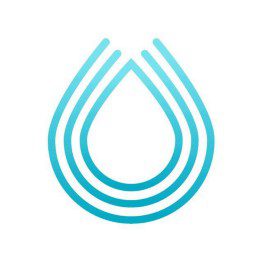A decentralized exchange (DEX) is a peer-to-peer marketplace. Transactions occur directly between crypto traders through a DEX, so there’s no need for a middleman. DEXs help fulfill one of crypto and DeFi’s primary tenants: fostering financial transactions that aren’t officiated by banks, brokers, payment processors, or any other intermediary.
In today’s article, we will examine one such DEX that’s making waves through a slightly differentiated protocol. So, keep reading to learn what Serum DEX is and how you can use it to grow your crypto investments.
Serum DEX
Launched in August 2020, Serum is an open-source DEX built on the Solana blockchain. The Serum foundation supports the project. In turn, the foundation backed by a consortium of crypto and DeFi experts, including those from FTX, Alameda Research, and the Solana Foundation.

Being built on the Solana blockchain differentiates Serum DEX from many competitors. Consequently, through the Solana blockchain, Serum DEX can offer fully-decentralized trading. Moreover, trades made via Serum are trustless, fast, and cheap, thanks to the automated order book.
An additional differentiator is Serum’s cross-chain trading support. Serum DEX users can trade assets from across different blockchains. Plus, Serum also supports wrapped coins and stablecoins as well as custom financial products.
Features
Let’s dive into more detail on the features that separate Serum DEX from its competition.

Key advantages of Serum include:
- Fully-Decentralized: As stated above, Serum, unlike other DEXs, is entirely decentralized. This decentralized order book gives users total control, allowing them to make the transactions they want at their desired prices.
- Cross-Chain Swaps: You need trusted parties to facilitate asset swaps in a decentralized landscape. But via Serum, swaps can take place trustlessly between different decentralized projects/blockchains.
- Physically Settled Contracts: Through Serum, you can use basic or advanced margin trading options to cater to both new and experienced users.
- Supported Cryptos: Currently, Serum DEX users have access to 15 coins and more than 30 trading pairs.
- Stablecoins: As previously stated, Serum supports wrapped and stablecoins with no dependence on bank reserves to maintain their price stability. SerumBTC is used to create tokens using Etheruem’s ERC-20 standard. It’s ideal for tokenizing BTC on Solana. SerumUSD is used for creating blockchain-based stablecoins.
- SRM Token: Serum uses its native token, SRM, to manage platform governance, including voting rights. Plus, users holding SRM receive discounted fees, up to 60 percent.

- Developer Ecosystem: Serum’s decentralized on-chain order matching services provide the infrastructure for additional trading applications. Plus, it gives these developers complete control and flexibility. Because the platform is built on an asset agnostic order book, Serum’s ecosystem has a more significant source of pooled liquidity and shared resources.
- Speed and Costs: Arguably, the most significant advantage of Serum DEX are the platform’s speed and transaction fees. Thanks to the Solana blockchain, Serum offers sub-second trading with ultra-low transaction costs of $0.00001 per transaction.
Future Vision
The creators of Serum believe in the potential of DeFi. They think that DeFi could reach up to 1 billion active users and $10 trillion of on-chain value. Still, to reach this potential, the entire DeFi ecosystem will need to continue to grow. Growth must occur in both scaling ability and the price per transaction.

And that’s why the team behind Serum DEX has built the platform on Solana. Solana’s blockchain can handle a high number of transactions per second (TPS) and can scale with Moore’s law. Plus, its gas is extremely cheap too.
Additionally, the tokenomics behind the SRM coin make it more appealing. Only 10 percent of all SRM began unlocked. The other 90 percent is set to unlock in the next six years. This scarcity makes it less likely to dump on exchanges.
Also, Serum buys back and burns their token, similar to what Binance does with its BNB token. These buybacks again make the token scarcer, which translates to positive price action. Serum accomplishes these buybacks through DEX fees. Eighty percent of DEX fees go to Serum buy/burns and 20 percent to SRM tokens.
Each of these features and the vision for the platform make Serum DEX a promising project. Still, the decision to utilize any DEX is ultimately yours and yours alone. But if you’re looking for a high-capacity, low fee DEX, you can do a lot worse than Serum DEX.
